After we’ve received a huge number of positive responses on our post on temporary adhesive sprays in embroidery, we realized that the theme of aerosol sprays is not yet all that familiar to many embroidery artists. That’s why we thought that the time came to make these “ethereal” little helpers known to the wider embroidery public. This article will do the honors, introducing types of sprays that make machine embroidery a more effective and enjoyable process. To that we’ll add little tricks of the use of such sprays as well as other bits of helpful information. So, let the spray tale commence…
All in all there are 7 aerosol sprays useful in machine embroidery:
1. Temporary spray adhesives. As our topic is concerned such stitching art as machine embroidery, we won’t address permanent spray adhesives (used in sewing).
2. Spray stabilizers of two kinds: starch sprays and fusible adhesives (glue), which turn any non-woven stabilizer into an iron-on (fusible) one.
3. Compressed air for removing dust, lint build-up and other unwanted particles from the insides of your equipment.
4. Machine lubricating sprays to clean and lubricate parts of your equipment, obviously.
5. Cleaning products for embroidery machine equipment are ones that clean build-up on your hoops and debris of various kinds on other parts of your machine.
6. Cleaning products for textiles deal with oil or grease stains on your embroidery projects.
7. Silicon spray lubricants are used for multiple of purposes (anything from lubrication of machine equipment to “revival” of “affected” threads).
So, now that we’ve enumerated all useful in machine embroidery sprays, let’s tackle each of them in detail.
Temporary spray adhesives
The first one will be Temporary spray adhesives. This type of spray is used for adding extra “grip” to your fabric-stabilizer sandwich. Also it’s absolutely indispensible in projects when you can’t hoop your fabric or garment. When working with quilts, appliqués and FSL patterns for embroidery machine, temporary spray adhesive is an absolute must. Actually, this type of machine-embroidery helper has an article of its own, where we’ve describe all its merits in detail. You can read the article here (Temporary adhesive Spray for embroidery)
Spray stabilizers
Now, that you’ve met your first embroidery hero, let’s move to the second one – Spray stabilizers. There’re two types of spray stabilizers. The first one stabilizes the material on its own, making feeble fabrics (silk, batiste etc.) stiffer and sturdier. Such sprays are usually starch-based. Such aerosol stabilizers are easy to find both in retail stores and online. Let’s look at some of them.
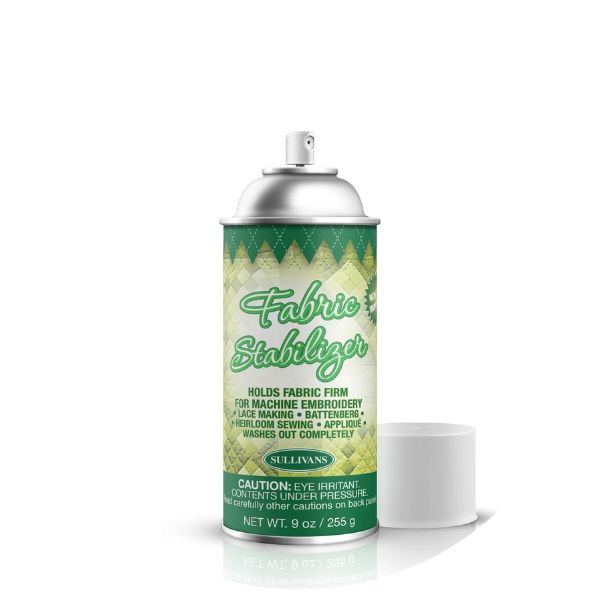
Sullivans 120 Fabric Stabilizer
Sullivans 120 Fabric Stabilizer, for once, promises to firm delicate fabrics both for the easer hooping and better quality embroidery results. Also Salivans 120 is widely used for embroidering knits, because it keeps them from stretching. This spray stabilizer is in the middle of the price range for similar products throughout.
At the top of the price range is Terial Arts Teiral Magic Fabric Spray. This spray is said to have a stronger effect on fabrics than the rest of its counterparts. On the downside, however, it might feel a bit too wet for the immediate use. The odor of Terial is of a big issue too.
One of the most economical and thus advantageous starch stabilizers is voted to be Purex Sta-Flo Concentrated liquid Starch. One might need to spray the product twice or thrice as much, but its low cost covers for the extra spraying with ease. Oh, and as it comes in the form of liquid, one will need a pump-bottle to actually use the product as spray.
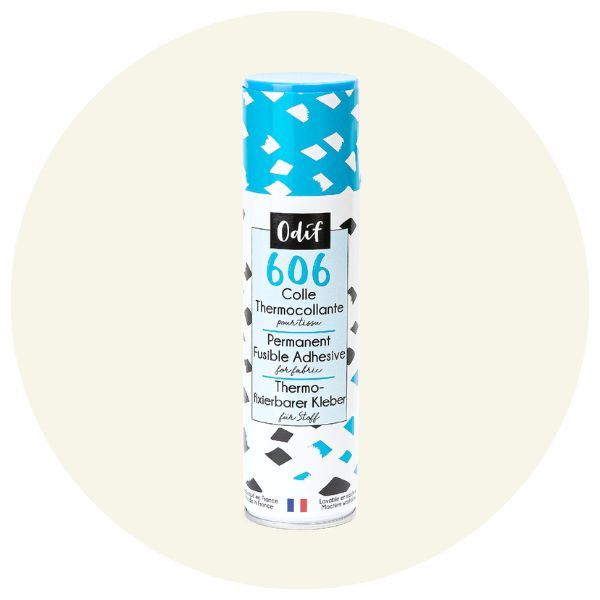
606 Spray and Fix Fusible Adhesive, by Odif
Now let’s talk about the second type of spray stabilizers. This one is applied to other media (fabrics or stabilizers) to turn them into stabilizers. The most common product of the second category is 606 Spray and Fix Fusible Adhesive, by Odif. When using this spray one should be careful, as it requires ironing to fuse. Due to the fact that ironing involves high temperature, colors in some fabrics might bleed.
Next in our spray list is a compressed air aerosol for removing lint, dust and other particles from the insides of your embroidery machine. This little number comes really handy in spots where the usual cleaning brush just can’t reach. It’s of no use enumerating actual brands of dust-away sprays as they practically are the same. Only thing worth mentioning is when buying such product look for the bottle with an extension straw for better target.
Machine lubricating sprays
Machine lubricating sprays are used for cleaning and lubrication of parts of embroidery or sewing machines. Rotary Hook, Needle Bar Driver & Bearing, Head Trimming Parts etc. are all need to be regularly cleaned and lubricated. The thing with lubrication (with oil, silicon or graphite-based spays), however, is it’s a very delicate issue. Usually, each embroidery machine should be lubricated with the lubricant type and brand, specifically mentioned in its manual. Embroidery machines, especially the newer ones, are extremely delicate mechanisms, which settings are done with certain requirements in mind. As to the lubricants, such requirements have to do with their chemical components, viscosity and other characteristics. Also some lubricants should not be mixed with the others, so keep that in mind too.
Now, it’s highly advisable that you stick to the particular requirements of your embroidery machine. If there’s no such info mentioned in the manual of your machine, it means that the manufacturer intends the machine to be lubricated by certified specialists only. As to the oil spray brands available on the market, AlbaChem, Madeira and Amann seem to enjoy most of the popularity. Some manufacturers, like Singer, introduce their own brand of oils for their embroidery machines. Silicon-based lubricants will be discussed a bit later.
Embroidery Machine cleaning sprays
Embroidery Machine cleaning sprays clean dirt, dust, debris and build-up from parts of your equipments. Some, like Sprayway 63 C-60 Solvent Cleaner & Degreaser, offer absolutely clean results, leaving no residue afterwards. Such products are great for cleaning energized equipment but cannot be used on plastic. Other products, like Hook Wash – Embroidery Machine Cleaner & Lubricant Spray, both clean and lubricate. Such double duty work means that they leave a protective film on the equipments, which helps lessen harming friction effect. There’re also sprays, like DK5 glue remover by Spray It or AlbaChem Multi-Purpose Cleaner /Degreaser, which help to remove build-up from various types of adhesives. It’s good to use these types of spray cleaners for hoops, needles and scissors because their formula was created specifically for the purpose. They will not harm plastic hoops or leave stains on fabrics.
What sprays not to use when cleaning (and lubricating) parts of your embroidery machine?
Despite its almost miraculous all-can-be-done properties, WD-40 should not be used with any embroidery machine. Why? Well, because its formula is created not for lubrication per se, but for grime or rust dissolving. The “cleaning” and lubricating effect of WD-40 are not quite what embroidery machine need; WD-40 just will not last. When the solvent substance dissipates WD-40 may actually cause bigger accumulation of spare particles of dust and lint.
Cleaning spray products for textiles
Cleaning spray products for textiles will remove stains from fabrics. Such help is extremely useful when you have greasy and oily stains on your embroidery projects. There’re of course various home-made treatments for such mishaps, but they cannot be used on all types of fabrics. With new products, like Albachem PSR II Powdered Dry Cleaning Fluid or Spot Lifter II Spray, even most delicate fabrics can be cleaned. Similar products are offered also by SprayAway, Pulimak and Pulisuper brands.
All of the products work in the same way: the formula is sprayed on the oily spot on the fabric. Distance, from which the spray should be applied, as well as the reaction time, differs with each manufacturer. Read carefully the instructions, written on the bottle. After the given time passes, the applied formula usually turns into white powder, which should be brushed away. This powder doesn’t leave any rings or other marks, and after it’s removed, the oily stain is usually gone too.
Silicon spray lubricants
Silicon spray lubricants – are real super-heroes of the machine embroidery world. Silicon based spray can tackle an immense variety of issues. Some of the most common ones include:
– Cleaning and lubricating internal parts of embroidery machines. This helps greatly with proper long-term work of the equipment;
– Revival of “dried-out”, old or otherwise negatively affected threads;
– Prevention of breaking, fraying and shredding of various types of threads (including metallic, wool and other decorative threads);
– Lubrication of non-woven fabrics (leather, faux leather), which helps the needle to work its way through the fabric easier
– Lubrication of needles. This helps greatly when you want to prolong your needle’s “life expectancy” as it protects the needle from friction and heat build-up.
As you see, silicon sprays have a really wide range of useful applications. With all that, however, they still have some pro and cons, concerning their use. Let us address some of them.
Pros and cons of silicon sprays
First, let’s speak about pros of silicon sprays over its oil counterparts. Unlike oil, silicon doesn’t oxidize at high temperatures, so it’s of greater use when lubricating high-friction parts of embroidery machines. Silicon doesn’t stain, so your embroidery projects are safe stain-wise. Now with the cons. Silicon sprays contain not pure silicon but rather a complex composition of silicon and water, alcohol or other solvent as a carrier. Eventually the carrier dissipates, leaving behind a thin slippery film. This film, especially if silicon’s sprayed without proper cleaning of the hardware, catches debris (dust, lint etc.). Traditional liquid machine oil is believed to have better cleansing properties in this case. However, not all technicians hold on to this belief. General rule of thumb that can potentially suit every embroiderer and every machine is to avoid mixing silicone and oil lubricants. Stick to either to keep your machine working without problems.
Silicone sprays solving problems with threads
This quality of silicone sprays is truly most embroiderers’ favorite one. It’s common knowledge that threads have their expiration date, after which they, well, just don’t have same performance quality. It won’t matter if your patterns for machine embroidery are designed with utmost perfection. It won’t matter if your stabilizers, tension settings and choice of needles are all ok. If threads break or fray the entire project might get compromised.
But is it really so? Apparently no! In most cases silicone spray can really do wonders to old threads, moisturizing them and thus making them feel almost as good as new. Silicon spray makes metallic threads be more agreeable during embroidery, preventing them from looping and getting all knotty. Additionally, silicon sprays help protect internal parts of your machine from friction caused by the hard feel of metallic threads. One just has to use it really sparingly. Otherwise the excess of slippery silicone will mess with the tension regulation of your embroidery machine. Word of caution: never use silicon spray if your embroidery machine has computerized tension settings.
Types of silicone sprays, available in the market:
The above mentioned examples of silicone spray applications make quite an impressive list, don’t you agree? With all that, however, they don’t make the complete picture of virtues and merits of this wonderful machine embroidery helper. Let’s see other cases when silicone sprays come in handy, mentioned in the description of products available in the market.
AlbaChem Dry Silicone promises manifold approach to various issues of machine embroidery process. This product can be used both for threads, textiles and hardware lubrication and cleaning. It won’t stain your textiles or attract dust and lint.
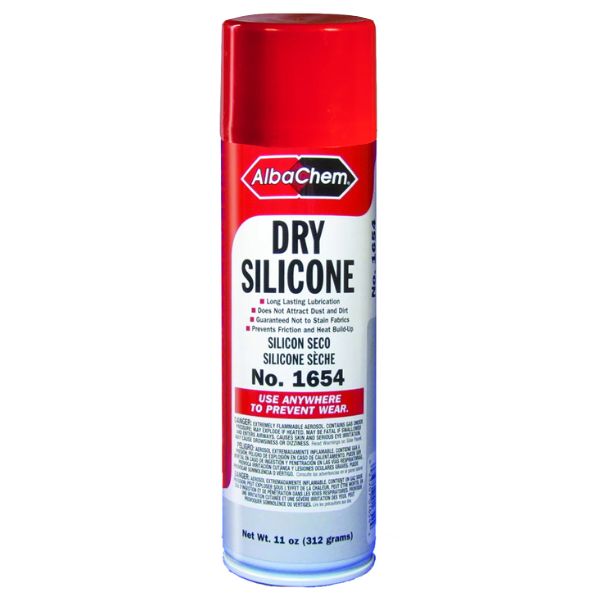
SprayAway 946 Silicone Spray has a nice dry feel to it, useful when working area needs to be slippery but not wet. Such quality will allow your fabric move easier through working area, without clinging under its own weight. The spray doesn’t stain.
Lubritex N 555 is used mostly for threads, but can be applied to plastic and rubber details as well.
Sullivans 946 Silicone Spray for Sewing has almost same characteristics as the rest of the lot, but with one quite a potent extra. This number is odorless, which makes it extremely handy when you can’t air the room often.
Few words in the conclusion…
After such a huge amount of information, we’re sure you’ll have many things to think and to spray too. But, before you’ll start doing the latter, we’d like to point one important thing out. Yes, there’re a lot of products, which are promised to right various wrongs (intentional and not) of machine embroidery. Yes, in many cases silicone sprays will stop threads from breaking as well as other sprays will do their jobs… But that doesn’t mean you can always count on their help when working with bad quality materials. Don’t go looking for cheap threads or other expendables from garage sales or other sources with questionable storage conditions. Quality of such items may not be good enough for your embroidery projects even with the help of various sprays. Moreover, using low quality materials you take your chances not only with the project but with embroidery machine equipment too.
Even most cutting-edge spray in machine embroidery offers only an additional help and not cure-all solution to everything. Use your common sense and try to work only with high quality materials in your projects.
We hope that this information was helpful. We’ll keep providing you with other valuable tips and pieces of advice, so keep an eye on our new post. Good luck with your projects and let each stitch that your machine makes lay as it should!
You may also like

Author: Ludmila Konovalova
My name is Ludmila Konovalova, and I lead Royal Present Embroidery. Embroidery for me is more than a profession; it is a legacy of my Ukrainian and Bulgarian heritage, where every woman in my family was a virtuoso in cross-stitch and smooth stitching. This art, passed down through generations, is part of my soul and a symbol of national pride.
Date: 07.04.2023
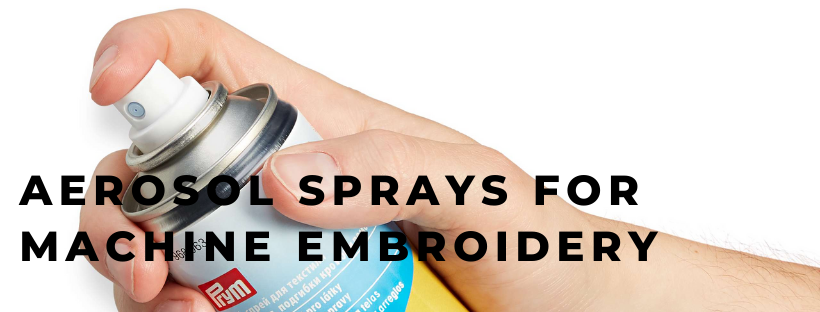
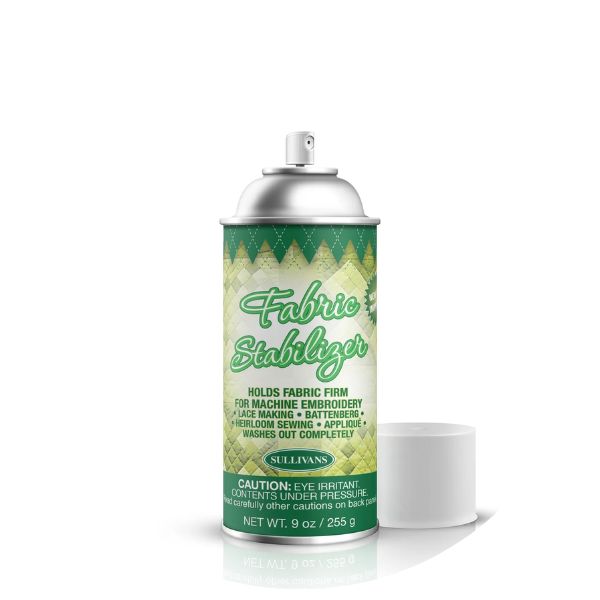


 Get Sign-In Link
Get Sign-In Link Login with Google
Login with Google Login with Facebook
Login with Facebook Login with Amazon
Login with Amazon Login with Paypal
Login with Paypal